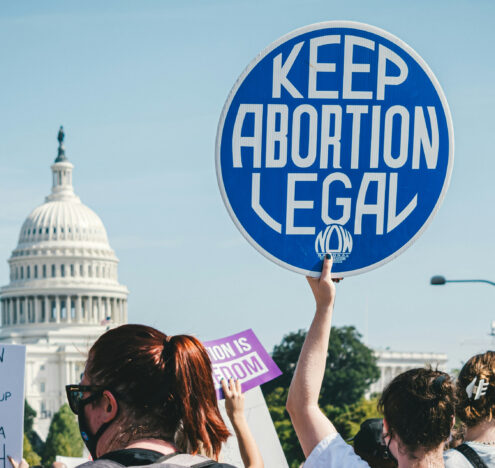It would be funny if it weren’t so potentially tragic — and consequential. No, I’m not thinking about Donald Trump’s 2024 presidential campaign but a related development: the latest decisions from the European Union (EU) about Ukraine.
As 2023 ended, European nations failed to agree on a $54-billion package of assistance for Ukraine at a time when that country was desperately trying to stay afloat and continue its fight against Russian occupation forces. Bizarrely, the failure of that proposal coincided with a surprising EU decision to open membership talks with that beleaguered country.
In other words, no military aid for Ukraine in the short term but a possible offer of a golden ticket to join the EU at some unspecified future moment. Ukrainians might well ask themselves whether, at that point, they’ll still have a country.
One person, right-wing Hungarian Prime Minister Viktor Orbán, is largely responsible for that contradictory combo. He singlehandedly blocked the aid package, suggesting that any decision be put off until after European Parliamentary elections in early June of this year. Ever the wily tactician, he expects those elections to signal a political sea change, with conservative and far-right forces — think of them as Donald Trump’s allies in Europe — replacing the parliament’s current centrist consensus. Now an outlier, Orbán is counting on a new crop of sympathetic leaders to advance his arch-conservative social agenda and efforts to cut Ukraine loose.
He’s also deeply skeptical of expanding the EU to include Ukraine or other former Soviet republics, not just because of Russian sensitivities but for fear that EU funds could be diverted from Hungary to new members in the east. By leaving the room when that December vote on future membership took place, Orbán allowed consensus to prevail, but only because he knew he still had plenty of time to pull the plug on Ukraine’s bid.
Ukrainians remain upbeat despite the aid delay. As their leader Volodymyr Zelenskyy tweeted about future EU membership, “This is a victory for Ukraine. A victory for all of Europe. A victory that motivates, inspires, and strengthens.”
But even if Orbán’s resistance were to be overcome, a larger challenge looms: The European Union that will make the final determination on Ukraine’s membership may not prove to be the same regional body as at present. While Russia and Ukraine battle it out over where to define Europe’s easternmost frontier, a fierce political conflict is taking place to the west over the very definition of Europe.
In retrospect, the departure of the United Kingdom from the EU in 2020 may prove to have been just a minor speedbump compared to what Europe faces with the war in Ukraine, the recent success of far-right parties in Italy and the Netherlands, and the prospect that, after the next election, a significantly more conservative European Parliament could at the very least slow the roll-out of the European Green Deal.
And worse yet, a full-court press from the far right might even spell the end of the Europe that has long shimmered on the horizon as a greenish-pink ideal. The extinguishing of the one consistent success story of our era — particularly if Donald Trump were also to win the 2024 US presidential election — could challenge the very notion of progress that’s at the heart of any progressive agenda.
Orbán’s Allies
For decades, Dutch firebrand Geert Wilders, leader of the far-right Party for Freedom, has regularly garnered headlines for his outrageous statements and proposals to ban Islam, the Quran, and/or immigrants altogether. In the run-up to the November 2023 parliamentary elections in the Netherlands, it looked as if he would continue to be an eternal also-ran with a projected vote total in the mid to upper teens. In addition to the usual obstacles he faced, like the lunacy of his platform, he was up against a reputed political powerhouse in Frans Timmermans, the architect of Europe’s Green Deal and the newly deputized leader of the Dutch center-left coalition.
To everyone’s surprise, however, Wilders’ party exceeded expectations, leading the field with 23% of the vote and more than doubling the number of Party for Freedom seats in the new parliament.
Although mainstream European parties had historically been reluctant to form governments with the far right, some have now opportunistically chosen to do so. Far-right parties now serve in governments in Sweden and Finland, while leading coalitions in Italy and Slovakia.
Wilders, too, wants to lead. He’s even withdrawn a 2018 bill to ban mosques and the Quran in an effort to woo potential partners. Such gestures toward the center have also characterized the strategy of Giorgia Meloni, the head of the far-right Brothers of Italy party, who downplayed its fascist roots and pledged to support both NATO and the EU to win enough centrist backing to become Italy’s current prime minister.
But what happens if there’s no longer a political center that must be wooed?
That’s been the case in Hungary since Viktor Orbán took over as prime minister in 2010. He has systematically dismantled judicial, legislative, and constitutional checks on his power, while simultaneously marginalizing his political opposition. Nor does he have to compromise with the center, since it’s effectively dropped out of Hungarian politics — and he and his allies are eager to export their Hungarian model to the rest of Europe. Worse yet, they’ve got a strong tailwind. In 2024, the far right is on track to win elections in both Austria and Belgium, while Marine Le Pen’s far-right party leads the polls in France and the equally intemperate, anti-immigrant Alternative fur Deutschland is running a strong second to the center-right in Germany.






















